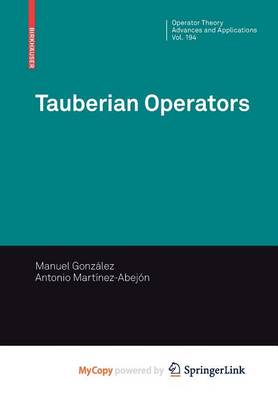Tauberian operators were introduced to investigate a problem in summability theory from an abstract point of view. Since that introduction, they have made a deep impact on the isomorphic theory of Banach spaces. In fact, these operators have been useful in several contexts of Banach space theory that have no apparent or obvious connections. For instance, they appear in the famous factorization of Davis, Figiel, Johnson and Pelczynski [49] (henceforth the DFJP factorization), in the study of exact sequences of Banach spaces [174], in the solution of certain summability problems of tauberian type [63, 115], in the problem of the equivalence between the Krein-Milman property and the Radon-Nikodym property [151], in certain sequels of James' characterization of reflexive Banach spaces [135], in the construction of hereditarily indecomposable Banach spaces [13], in the extension of the principle of local reflexivity to operators [27], in the study of certain Calkin algebras associated with the weakly compact operators [16], etc.
Since the results concerning tauberian operators appear scattered throughout the literature, in this book we give a unified presentation of their properties and their main applications in functional analysis. We also describe some questions about tauberian operators that remain open. This book has six chapters and an appendix. In Chapter 1 we show how the concept of tauberian operator was introduced in the study of a classical problem in summability theory - the characterization of conservative matrices that sum no bounded divergent sequences - by means of functional analysis techniques. One of those solutions is due to Crawford [45], who considered the second conjugate of the operator associated with one of those matrices.
- ISBN10 3764399171
- ISBN13 9783764399177
- Publish Date 8 September 2010 (first published 19 November 2009)
- Publish Status Withdrawn
- Out of Print 18 October 2014
- Publish Country US
- Imprint Springer
- Format Paperback (US Trade)
- Pages 262
- Language English
